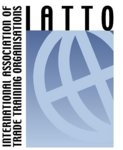Toolkit for exporters
This is a series of FREE tools for you to use in your own exporting business. They have been compiled by staff of the School and you are welcome to download or copy them. Please acknowledge their source.
TOOLKIT #1
Researching International Markets
Researching international markets is the key element in developing successful international marketing strategies. Unfortunately, many New Zealand exporters continue to pursue overseas opportunities without undertaking adequate research beforehand, or discontinue their research once in the market.
Information gathered through research can range from general country profiles to specific information about product, promotion, distribution and price, but the purpose of gathering information is always the same - to enable businesses to make more informed decisions and reduce their level of risk.
How do I select an overseas market?
When selecting a target market, many businesses have a particular country in mind. Start by looking for market opportunities in low-risk countries and focus your resources on one or (at most), two key markets before attempting world domination. But remember, even if you are very familiar with an overseas market you still need to do your research.
If you arent sure which market to target, you will need to adopt a screening approach to identify the most attractive target markets for your products or services. Initially, you would be wise to eliminate for example, those countries which are politically unstable or where you may have issues in repatriating profits. You can then rank remaining markets against a list of factors relevant to your business e.g. geographical proximity may be important if your products are highly perishable; access to skilled personnel may be of utmost importance to a firm offering a high level of after-sales service.
What kind of research should I undertake?
Given that the international marketplace is far more complex than the domestic market, finding the right information is critical and there are two main ways for doing this:
1. Secondary research often referred to as preliminary desk research. Much of the secondary information about a market can be gathered in New Zealand and is available at no cost. It is important to use a wide range of sources but more importantly, the sources you use must be accurate.
2. Primary research is undertaken to fill specific needs for information. It is different to secondary research because it is not generic, but supplies specific answers to specific questions.
What do I need to know?
Before undertaking any research, save yourself valuable time and money by asking some key questions:
1. What information is needed and what will I do with it
2. Where can I obtain this information
3. Why do I need this information
4. When do I need this information
5. What is this information worth in dollar terms
6. What is the likely cost of not getting this information
What kind of information is available to me?
The most common types of information you will require fall into these categories:
Market information: market size i.e. in terms of geography and dollar value; market trends, regulatory issues and opportunities in key sectors.
Trade and production statistics: an examination of a countrys trade statistics will help you find out what products and services are imported and from where. By examining statistics over time, you can also determine whether the market for certain goods is growing or shrinking. You should also gather information about the goods and services manufactured in the overseas market.
Demographic information: Population statistics, per capital income and expenditure and consumer spending patterns are all important indicators of the market potential for your product or service.
Regional information: within a single country, there can be many significant regional differences between geographical regions, urban and rural areas.
Competitive information: Knowing who your competitors and potential competitors are is vital and building a profile of the products and services they provide is a key element of your competitive analysis.
Potential partners: if you are considering partnering with another company, be it a manufacturer or distributor, then performing due diligence is extremely important.
Legal and regulatory information: If you are exporting, you need to be fully aware of the taxes and duties that apply and ensure that your products and services comply with the law and regulations of your export market.
Intellectual property: some countries are notorious for violating intellectual property rights, copyright and trademarks. In these markets it is essential to protect your IP.
Where do I find this information?
The New Zealand School of Exports export library and information service ELIS provides an up-to-date and reliable one-stop-shop for those seeking anything from country profiles to foreign exchange rates and time zone information. ELIS is freely available to all New Zealand exporters and by bringing together a huge amount of key information in one location, saves exporters an enormous amount of time. ELIS can be accessed at: www.export.ac.nz where you can also access a series of free Pathfinders which are step by step fact sheets to guide you through a range of topics such as finding country information and sources of financial help for exporters. Please feel free to download these from the "Free Downloads" page.
New Zealand firms can obtain primary research by visiting the overseas market and checking at first hand the impressions formed through secondary research. Trade missions such as those organised by NZTE or Business Associations are a particularly useful way of gathering accurate and specific data. Alternatively, businesses can commission market research agencies to undertake research on their behalf. To download a free Agency Brief template click here: ![]() Briefing a Market Research Company.doc
Briefing a Market Research Company.doc
Where do I keep this information?
Larger companies in particular, may have a library or repository for storing information in either hard copy or electronically, but for many smaller companies this is rarely the case. Instead, one or two people in the firm have a head full of extremely valuable knowledge which leaves the business when they do.
A particularly useful method for keeping key information together is through a country notebook. Many companies have a notebook for each country in which they do business, containing information to be aware of when making decisions involving a specific market. The country notebook becomes the first point of contact when a marketing decision is to be made and as new information is collected, the country notebook can be updated by the country or product manager. All product adaptations, changes in advertising or labelling etc., are included in the country notebook, which also serves as a good introduction to the market for new staff.
Like your business plan, your country notebooks are only valuable if they are continually updated and used as a working document, rather than to prop up a wobbly table leg, so develop a format which is easy to update and is accessible to all those who need it. To be truly useful, a business needs to decide on the necessary content for the country notebook, however a generic template which can be adapted for your business can be downloaded here:![]() The Country Notebook.doc
The Country Notebook.doc
Here is a PDF version of Researching International Markets if you wish to download it: ![]() Researching International Markets.pdf
Researching International Markets.pdf
Page last updated 27 January 2010









